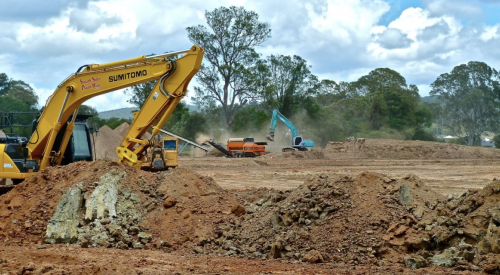| Terrabrook's 1,400-acre Windemere community nears completion in Cumming, Ga.
|
During the mid-1990s, when job growth in Atlanta ran at a 100,000 annual clip, the supply of single-family lots in the 15-county region flowed like water. But there are signs that flow has peaked and is leveling.
The amount of urbanized land in Atlanta grew exponentially during the '90s, spreading across 6,100 square miles and dwarfing the size of most other metro regions around the country. This rapid outward movement has kept lot prices relatively low during the past 10 years. But land-value forecasts based on the Pugash/Rosen measure of gross metropolitan product per lot (GMP/lot) show signs of a shift during the next few years. Lot prices will hold steady and then rise on clear indications of a slower pace for lot creation and a fluctuating demand during the next 36 months.
The Atlanta scenario is symbolic of many fast-growing cities that have few natural boundaries to growth and spread outward in all directions. Likewise, Atlanta's GMP/lot of $136,948 in 2001 makes it one of the most affordable places to build and buy homes. It has been the No. 1 home building market several years running.
GMP/lot offers a closer take on a region’s economic health by measuring its economic productivity as opposed to other land-value measures that use average personal income as a basis. Even in the slower-growth climate of 2002, for example, an estimated 49,000 single-family permits were pulled in Atlanta. But land values as indicated by GMP/lot estimates from Rosen Consulting Group, Berkeley, Calif., stayed level at $136,418 in 2002 and call for gradual increases to $136,609 in 2003, $140,320 in 2004 and $145,367 in 2005. These estimates assume that annual single-family permits will fall to 40,000 in 2003 and then rise to 41,900 and 44,800.
|
|||||||||||||||||||||||||||||||||||||||
David Frame, executive vice president and chief operating officer for Atlanta-based development giant Terrabrook, says two forces are constricting Atlanta’s once free-flowing market for land. The first is topographic: a lack of flat, easily developable land in the fastest-growing areas north of the city. The second is a shifting political climate from the increasing fear of adding pressure to maxed-out schools and roads in some areas.
"A lot of things are affecting the availability of land," says Frame, whose company is developing three large master-planned communities in the region. "As you move farther north, you encounter a significant increase in development costs because the amount of rock that has to be removed increases dramatically. Many times the cost of developing that lot can be such that the parcel is not feasible because the market is just not there."
As is common elsewhere in the country, rising political sensitivities have affected entitlement time lines, explains Frame. The same pressure also has led some communities to approve only lower-density move-up product instead of entry-level homes. As a result, says Frame, future development will occur in southern portions of the region, closer to Hartsfield International Airport, where transportation- and distribution-related jobs are holding strong.
"The south, east and west sides don’t have quite the same constraint with development costs," he says. "The issue there is that the pricing on the south side has a definite ceiling. Until more class-A office space gets built, that will be an issue."











